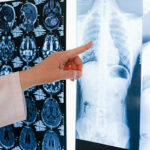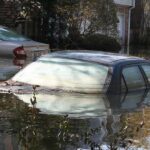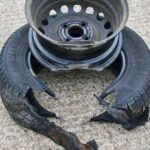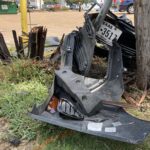Tesla’s Autopilot Software Under Scrutiny
“Tesla has been the darling of the auto industry for the last several years but multiple car wrecks are alleged to have been caused by their ‘Autopilot’ and ‘Full Self-Driving’ software systems and that could put them in a vulnerable legal position,” stated well-known personal injury lawyer Jennifer LeMaster of LeMaster & Nejat PLLC, “and some of Tesla’s critics have suggested that one or more safeguards could have prevented some of these car accidents. Personal injury attorneys will likely pursue injury claims because of Tesla’s marketing use of phrases such as ‘Autopilot’ and ‘Full Self-Driving.’ That contrasts with the Tesla website that states: ‘Autopilot and Full Self-Driving Capability are intended for use with a fully attentive driver, who has their hands on the wheel and is prepared to take over at any moment. While these features are designed to become more capable over time, the currently enabled features do not make the vehicle autonomous.'”
How Many Accidents Has Tesla Had?
“Telsa can claim excellent accident statistics. Overall the accident rate for all vehicles in the United States is one accident for every 475,000 miles driven. Tesla recently reported one accident for every 3.7 million miles driven while Autopilot is engaged. However, personal injury law and redress does not stop with favorable statistics. Any automobile manufacturer could be successfully sued despite a lower accident rate if it is shown that they could have included more safeguards or if they used a marketing term such as ‘Fully Automated’ or ‘Autonomous Driving’ in a misleading manner,” explained Ms. LeMaster.
Can Tesla Cars Drive Themselves?
At this time there are NO self-driving cars manufactured in any country on the planet. However, Tesla cars do have sophisticated software that can assist a driver in a number of ways. Currently, the company offers Autopilot, Enhanced Autopilot, and FSD (Full Self-Driving). Autopilot offers Traffic-Aware Cruise Control and Autosteer. Enhanced Autopilot offers Adaptive Cruise Control, Autosteer, Autopark, Summon, and Navigate on Autopilot. FSD (Full Self-Driving) offers Navigate on Autopilot (Beta), Auto Lane Change, Autopark, Summon, Smart Summon, and Traffic and Stop Sign Control (Beta).
Today virtually every automobile manufactured sounds a warning alarm if a driver or passenger is not wearing a seat belt. An alarm or a “kill switch” could help deter people from attempting any action that could be unsafe. And there are other possible safeguards currently available. General Motors offers a “Super Cruise System” that includes a camera that tracks the driver’s eyes. If the driver falls asleep or if the driver’s head slumps down the camera will notice and sound an alarm.
The automobile industry in the United States has less than a stellar record when it comes to safety. It has often opposed new safeguards usually claiming that they would present American consumers with an excessive cost burden. Beginning in the early 1960s, the industry was accused of unsafe automotive design and the lack of safety standards. Ralph Nader wrote a book titled “Unsafe At Any Speed” that criticized the General Motors Corvair automobile and the apathy of the industry regarding safety. But he did not become a national figure until investigators hired by General Motors tapped his phone, questioned his friends, and hired prostitutes for the purpose of entrapping him into illicit relationships. It backfired badly and the CEO of General Motors apologized to Mr. Nader when testifying to Congress.
In the 1970s the automobile industry was dogged by an image of arrogance, inefficiency, and shoddy workmanship. This was highlighted by the controversy over the Ford Pinto and the tendency for its gas tank to rupture in a rear-end accident and create fiery car crashes. Lawyers in one of the many personal injury lawsuits discovered the infamous internal Ford memo that calculated corporate profits would suffer a $113 million deduction if Ford fixed the gas tank problem in all its Pinto automobiles but profits would only suffer by $49 million if the company did NOT fix the cars and simply paid the lawsuits from victims of fiery car wrecks.
In 1966 public pressure overwhelmed the automobile industry and Congress passed the National Traffic and Motor Vehicle Safety Act and the Highway Safety Act. Simple safety devices were mandated by law and these included safety glass, padded dashboards, emergency flashers, and impact-absorbing steering wheels. Seat belts became mandatory equipment in 1968 as per Federal Motor Vehicle Safety Standard 208.
Injured by a Defective Auto Product?
When an individual is injured in an automobile accident and the suspected cause is a defective auto product then personal injury attorneys will focus on the “chain of distribution” and “joint and several liability”. Generally speaking, this means that any company involved in the manufacture, distribution, or sale of the defective auto product can and will probably be named in a personal injury car accident lawsuit.
LeMaster & Ahmed PLLC, Attorneys at Law, encourages anyone who has been injured to fight back. They deserve a fair and equitable settlement for their injuries, their pain and suffering, their physical rehabilitation, their loss of income, and the impact their injuries will have for the rest of their lives.
Speak to a Lawyer Now
Search Blog
"*" indicates required fields










